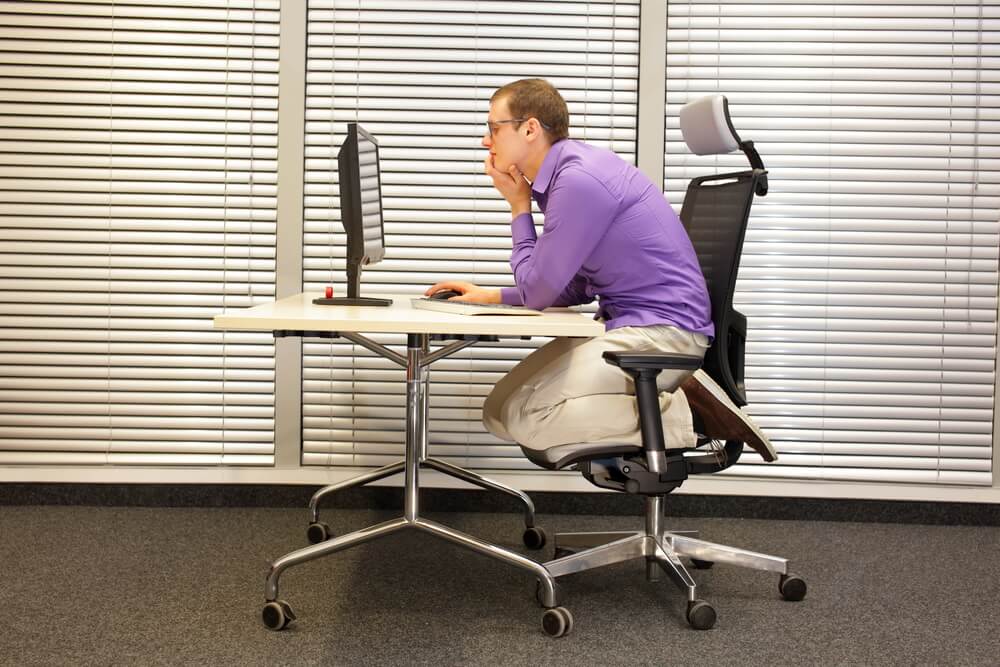Sedentary Lifestyle: How to Prevent Sitting Disease Symptoms?

The adverse health effects of prolonged or regular immobility have been the topic of much research in the medical community. Sitting disease is the term used to refer to the metabolic and ill-effects of a sedentary lifestyle in humans. World Health Organization recommends completing at least, a minimum of 75 minutes of active exercises or 150 minutes of moderate activities weekly, to decrease the risk of sitting disease. Medical College of Wisconsin also conducted the research on the dangers of sitting too much, and the results were outstanding. The outcome of the study showed that individuals were at risk of poor health caused by living a sedentary lifestyle.
What Is A Sedentary Lifestyle?
A sedentary lifestyle is simply going through days with little or no physical activity. For example, spending long hours sitting at your desk and after that sitting on the couch at home before going to bed. If such cycle continuous daily, you’re probably living a sedentary lifestyle. NCBI also determines the correlation of living a sedentary lifestyle to health risks. It was discovered that individuals were at high risk of disease and mortality for spending long hours sitting too much. Maintaining a sedentary lifestyle is one of the leading causes of the sitting disease development, as inactivity is disadvantageous to the overall health and wellbeing of individuals.
What Is Sitting Disease?
Although it is not recognized as a diagnosable disease, the word ‘sitting disease’ was coined by the scientific community to explain the negative effects of sitting too much. The sitting disease is caused by remaining in a sitting position for long periods at once. It can be directly linked to cubicle syndrome as both are related to each other. Most desk and office jobs are referred to as sedentary work because it does not require individuals to move often. Light duty work that required no form of item lifting over 10 pounds can be called a sedentary work.
Below are a few telltale signs of sitting too much symptoms:
#1: Bad Posture
The human body was created for movements and activities. When you sit for long hours at a time, it is difficult to maintain a good posture. Sitting for too long could cause your musculoskeletal system to conform to the current sitting position, thus destroying your posture. Pressure is deposited on the lumbar discs caused by the rotating of the pelvis backward due to sitting too much. Fortunately, many modern devices can improve the sitting posture of your back, spine, and limbs e.g., ergonomic footrests, armrests, and stools.
#2: Weight Gain
Did you know that you burn 80 calories per hour while sitting and 88 calories per hour standing up? Energy expenditure is reduced when you sit for too long, so it is challenging for you to burn an adequate amount of calories. If this continues, individuals who ingest food and complete no activities dedicating to burning those calories are at risk of obesity. Desk riser can become a healthy solution to start spending more time on your feet during the workday.
#3: Reduced or Slower Metabolism
It is common for insulin levels to drop and weaken when individuals sit for too long, and this causes slower metabolism. Prolonged sitting decreases muscle contractions and reduces the body’s ability to burn fat.
#4: Diabetes, Cancer, and Cardiovascular Disease
Due to the drop in insulin levels caused by sitting too much, the body is unable to handle the blood sugar level properly, and this can cause diabetes. The insulin in the body helps deposit glucose in the blood cells where it is used to fuel energy. Studies show that women are at high risk of contracting breast, ovary, and corpus cancer due to living a sedentary lifestyle. Individuals in general who have sedentary work are at risk, as they have an increased incidence of cancer.
#5: Spinal Injuries & Chronic Pain
A reoccurring sitting too much symptom is chronic pain. This pain is caused by bad posture (lower back pressure), which is caused by sitting for long hours on end. If an individual lives a sedentary lifestyle, it is common for the spine to weaken due to lack of muscle movements. To have a healthy spine, regular movement is required. Without proper movements, the spine deteriorates making individuals prone to spine and back injuries.
#6: Depression & Lack of Social Skills
It is common for individuals who live a sedentary lifestyle to lack social skills because there is hardly any movement. They are confined to sitting in a position for long hours and only having communications over the Internet. With an increase in the utilization of social media platforms came a decline in regular human social involvement. This lack of social skills can also lead to loneliness and depression.
Easy Preventive Measures and Practical Tips For Fighting Sitting Disease

Proper preventive measures against Sitting disease include:
- Standing from your desk to stretch your body from time to time. You can also set the alarm to help you remember to stand up for a few minutes between tasks.
- Taking breaks to stroll around your office every few hours to keep you active
- Walking around to take calls or read text messages
- Installing stand up furniture like adjustable standing desks around the workplace or living area to remind yourself to stand up.



Comments